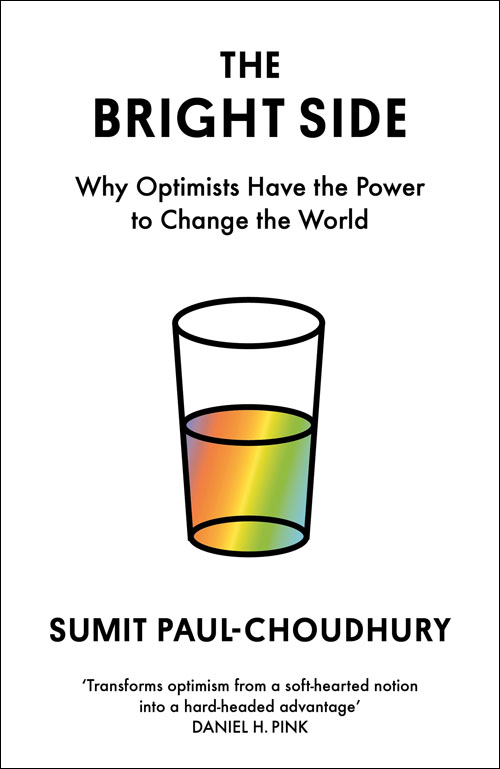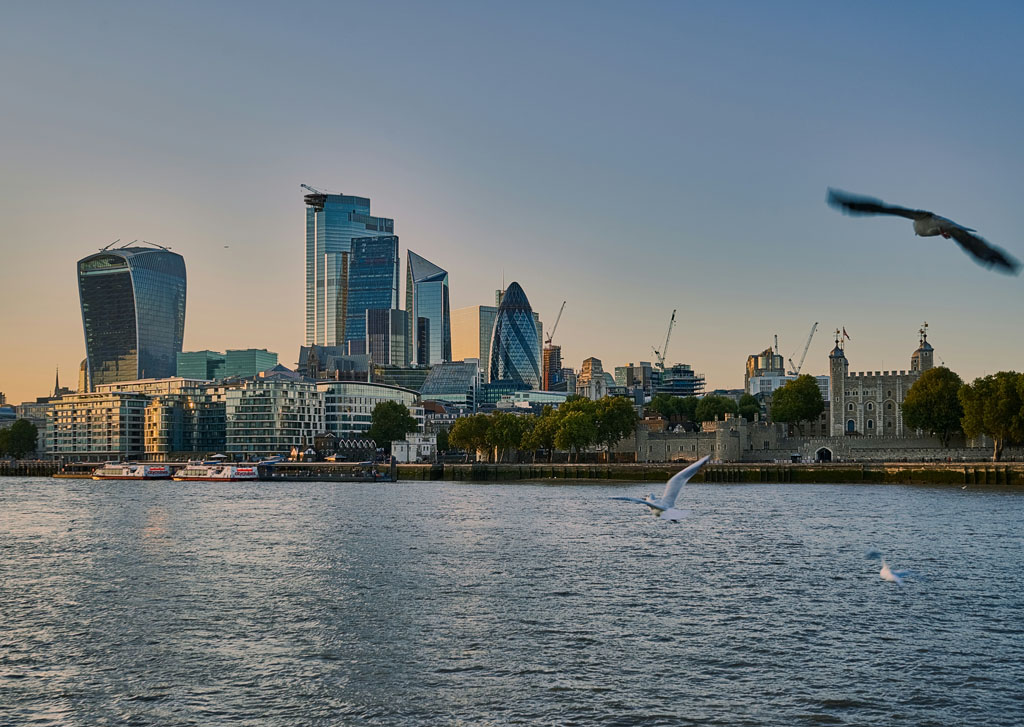An optimist believes that humans can harness or overcome natural processes in order to make progress. But what does that mean?
Here’s an example.
I started my career working for a financial magazine in a nondescript office block at the top end of Marylebone Lane in London. Marylebone Lane is a strange, off-putting road: it winds sinuously across the West End’s otherwise orderly grid of streets, without the wall-to-wall bistros and boutiques of its neighbours. One day, a colleague explained why: the road follows the route of the Tyburn, one of London’s storied ‘lost rivers’: it had long since been covered up and built over.
For a moment we mused about the Venetian wonderland we might have inhabited had the river never been culverted. The dingy boozer across the road transformed into a riverside bacaro; the trudge to the station replaced by a relaxing bankside promenade; black cabs swapped for punts drifting languidly towards the Thames. Our riparian reverie was rudely interrupted by someone demanding to know where on earth their copy was, but I never forgot about the river burbling far below my feet.
But why was the Tyburn buried in the first place? For hundreds if not thousands of years, Londoners had been both drawing fresh water from the Thames’s dozen-odd tributaries and dumping waste into them – not just sewage, but food scraps, agricultural run-off and tannery chemicals, animal corpses, industrial waste and household junk. But mostly sewage. The precise history was as murky as their waters became, but the upshot was that over time the lesser rivers, including the Tyburn, turned into noisome nuisances. One by one they were covered over, to carry their cargo unseen into the Thames.
But as the population grew, and more people gained access to running water and flushing toilets, the quantity of waste became so huge that the Thames itself became foul: its waters darkened, filth piled up on the river’s banks and the stench mounted.
‘Through the heart of the town a deadly sewer ebbed and flowed, in the place of a fine fresh river,’ Charles Dickens wrote in Little Dorrit. The scientist Michael Faraday campaigned for action to be taken, writing to The Times in 1855, ‘The river which flows for so many miles through London ought not to be allowed to become a fermenting sewer . . . If we neglect this subject, we cannot expect to do so with impunity; nor ought we to be surprised if, ere many years are over, a season give us sad proof of the folly of our carelessness.’
In fact, the subject had already been neglected for some years: an ambitious plan to revamp London’s totally inadequate sewerage system had been proposed but summarily rejected as unaffordable. And so the season Faraday predicted came three years later, when a heatwave led to London being suffused by the ‘Great Stink’. It was unendurable in the House of Commons, where curtains soaked in ‘chloride of lime’ failed to alleviate the stench; by one of those remarkable coincidences so common in politics, it was only then that parliamentarians agreed something must be done – although one Tory continued to argue that the government ‘had nothing whatever to do with the state of the Thames’. Plus ça change.
Civil engineer Joseph Bazalgette promptly revived his plan for a system of properly engineered sewers that would carry waste out of the city. More than a thousand miles of drains ran into the newly brick-lined rivers Tyburn, Fleet and Walbrook, now pressed into service as ‘interceptors’ which ran down to the banks of the Thames. They didn’t empty into the bigger river, but into two further tunnels which ran alongside it to the estuary, where pumping stations ensured the waste was washed out to sea with the tide.
Bazalgette thought big, and he thought for the long-term. The project required 318 million bricks, 670,000 cubic metres of concrete and thousands of labourers working for nearly twenty years; it also used innovative materials, notably highly water-resistant Portland cement. Budgets were blown and deadlines – the planning fallacy was as potent then as it is now – but there was only one chance to get it right. I’ve visited one of the sewers he built, and also one of the pumping stations: both are beautifully constructed marvels of engineering (albeit that you do, of course, have to look past the sewer’s actual contents to appreciate that).
And it worked. The project led to a far cleaner, greener city, and a much healthier one. Londoners had been dying in their tens of thousands from cholera; the new sewage system put a stop to the transmission of that and other diseases, with enormous benefits for Londoners’ health. It also had other benefits: twenty-two acres of land were reclaimed, creating the riverside embankments which still define the city today, and under which the District and Circle Underground lines carry hundreds of millions of passengers each year.
Bazalgette’s achievement has become the stuff of engineering legend. Consider, for a moment, the scale of the challenge. To early Londoners, the Thames must have seemed inexhaustibly vast. Treating it as an open sewer might not have been especially savoury, but there seemed little chance of exhausting its capacity. How could it possibly become so polluted as to be utterly toxic? And then, once it became apparent that it had, how could mere humans possibly clean it all up again? It must have seemed – well, it must have seemed as formidable as the challenge of purging the sky of greenhouse gases does today.
The parallels are striking. Both then and now, the combination of scientific denial and political intransigence has delayed progress. Both then and now, the problem has been caused by too much of a good thing – the Industrial Revolution then, the Great Acceleration now – whose drawbacks have fallen disproportionately on the poor. And, like the Victorians, we’re daunted by the scale of the challenge. We’re not sure that we can build big enough and quickly enough. We know the work will have to continue long after most of us alive today are dead. And we’re divided about whether the job requires government action or can be left to commercial forces.
But history doesn’t repeat, it rhymes. Nineteenth-century London was enriched by its vast empire, and could act unilaterally and autonomously to sort out the Thames. Climate change is a global problem, and will require a more collective approach to solve. But the point isn’t that we should mimic the solutions of an earlier age: it’s that we should be inspired by them. Their stories can encourage us to believe – as unrealistic as such expectations may at first seem – that our own problems aren’t as insurmountable as we think. The Victorians did it. Perhaps we can, too.
The climate-change equivalent of this Victorian megaproject is geoengineering, the use of technologies that would actively manage the Earth’s climate on very large scales, up to and including interventions that would affect the entire planet. It comes in two main varieties: either removing greenhouse gases from the atmosphere or preventing sunlight from reaching the Earth’s surface. There are a number of approaches to both, requiring varying degrees of technological sophistication.
Re-engineering the climate of an entire planet requires vast amounts of . . . well, everything. Planting trees is simple, but would require huge tracts of land, much of which has already been claimed for other purposes. Carbon-absorbing infrastructure would take large quantities of material and energy to build – and that in turn means huge costs and, for the moment, huge carbon emissions. Many of the technologies needed have not yet proven themselves at industrial scales, or are not yet economically viable. Some simply don’t exist. And because the climate is a family of complex, sometimes chaotic, systems, any solution will inevitably have unintended consequences that are hard to predict and control.
For all these reasons, geoengineering is no one’s preferred approach to tackling climate change, just as lockdown is no one’s preferred approach to tackling a pandemic. Like lockdowns, the best justification for geoengineering is that it could buy us time to implement a better solution: the decarbonisation of our societies and industries.
But we may find ourselves without much option. ‘We live in a world where deliberately dimming the fucking sun might be less risky than not doing it,’ Andy Parker, the project director for the Solar Radiation Management Governance Initiative, told Elizabeth Kolbert, author of Under a White Sky, an exploration of human efforts to ‘fix’ the environment. The title refers to the changed appearance of the sky under the stratospheric-injection version of geoengineering. A technology with such transformative effects is daunting to contemplate: many climate specialists view it as not just unrealistic but unthinkable. But an increasing number of scientists, if still a minority, disagree; and some wealthy activists are ready to back them. Guerilla projects are already taking place around the world, to the dismay of some and the delight of others.
Right now, there’s effectively a moratorium on even basic research into the more radical forms of geoengineering. There’s an understandable justification for that: fear of unintended consequences. In 1955, the brilliant mathematician John von Neumann wrote in Fortune that actions to control the climate ‘would be more directly and truly worldwide than recent or, presumably, future wars, or than the economy at any time . . . [and] merge each nation’s affairs with those of every other, more thoroughly than the threat of a nuclear or any other war may already have done.’
But with more individuals, companies and states worried about climate and motivated by the trillions of dollars in play, geoengineering attempts are starting anyway – unregulated and unfettered. Panglossianism is at work: there is money and power to be had, and the promise of a brighter future. We need to be able to predict the consequences of geo-engineering before someone starts doing it in earnest: that means conducting experiments and building models.
Geoengineering is a literal attempt to make a better world than the one we have: it’s the grandest of grand plans. It’s no wonder people are wary of it, particularly those working close to the environment, to many of whom more technology is anathema. It seems more natural that we should get there by other means: by reducing our footprints, by rewilding the planet, by reconfiguring our industries. By tending to our gardens, as Voltaire would have put it. And we do have to do that. But treating climate change as a matter of personal choice rather than a systemic failure is misdirecting responsibility. We can hope everything works out, but that would be blind optimism. A planetary problem may ultimately require a planetary answer.
Think of it this way. We’ve already embarked on a vast experiment in geoengineering, but one that is virtually uncontrolled and caused by millions or billions of actors disposing of their waste in any way they wish, just as medieval Londoners were free to throw whatever they wished in ‘their’ rivers. The effects are playing out both alarmingly quickly and terrifyingly slowly: even if we were to stop emitting carbon today, the effects of what we’ve already done will be felt for hundreds of years, just as the pollution of the Thames was felt for generations. The planet is our garden now, and its custodianship is ours, whether we like it or not. Or to put it in the words of the pioneering activist Stewart Brand: We are become as gods. We might as well get good at it.
- This is an edited extract from The Bright Side: Why Optimists Have the Power to Change the World by Sumit Paul-Choudhury, published by Canongate at £20.

Lead picture credit: Bastian Pudill on Unsplash

